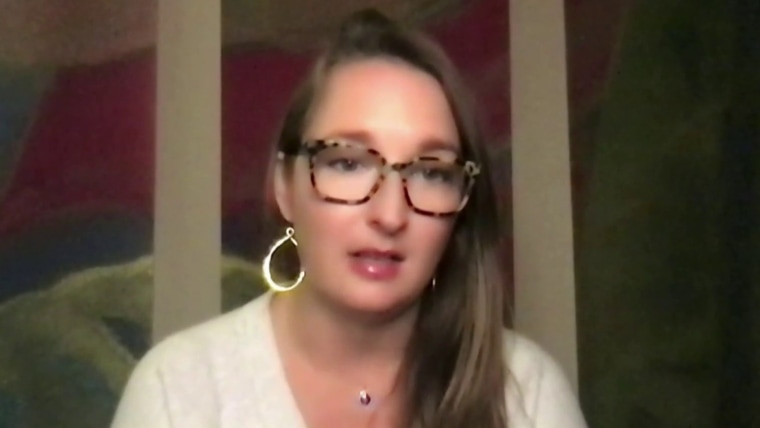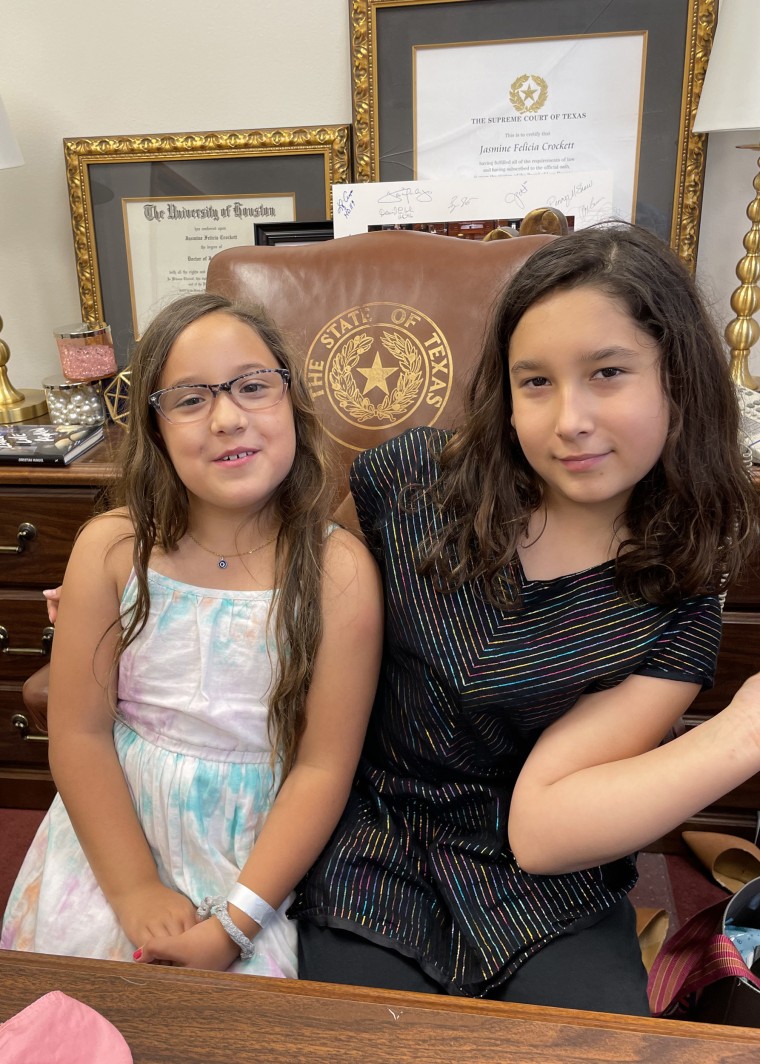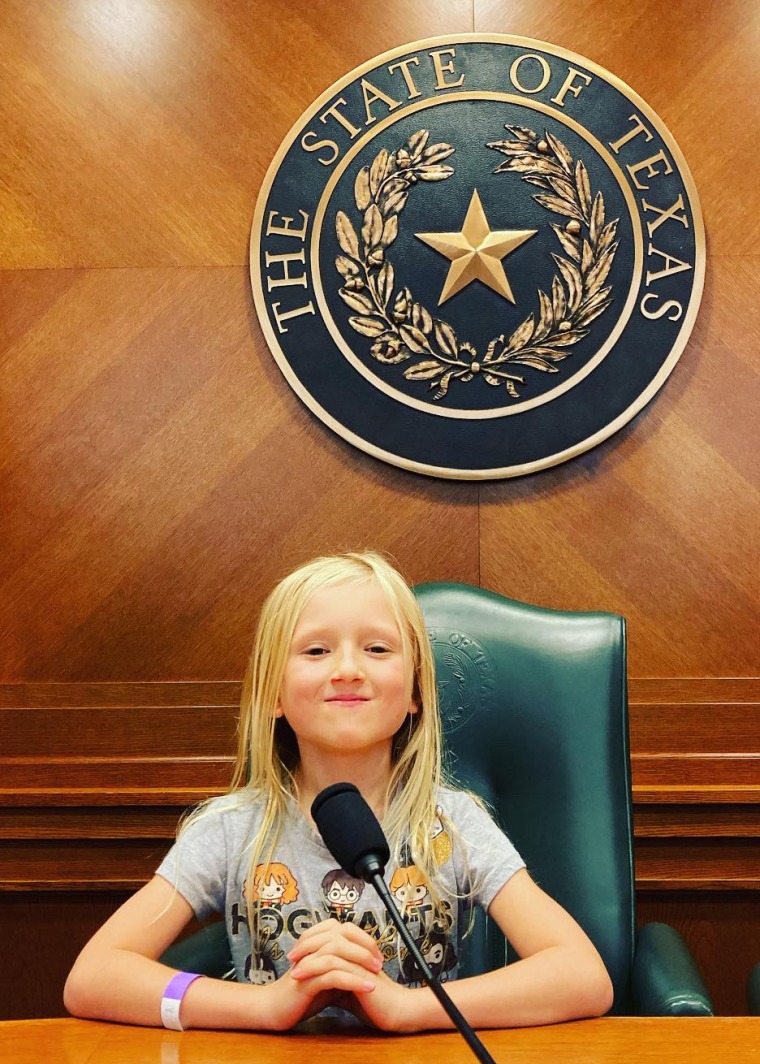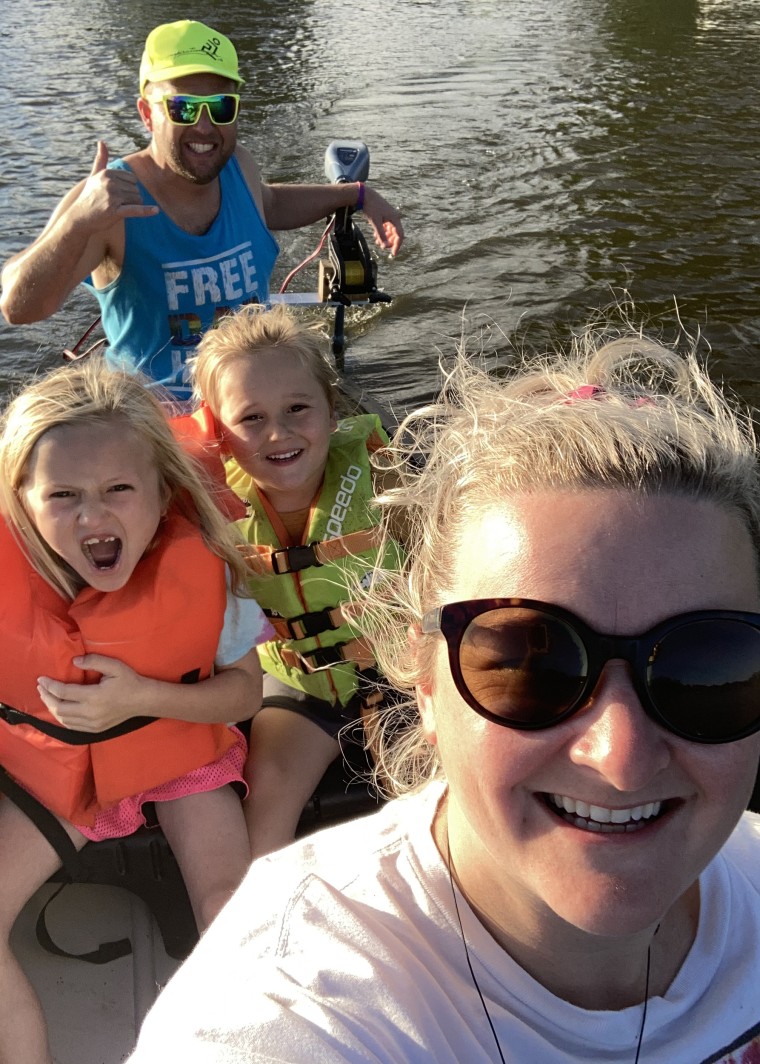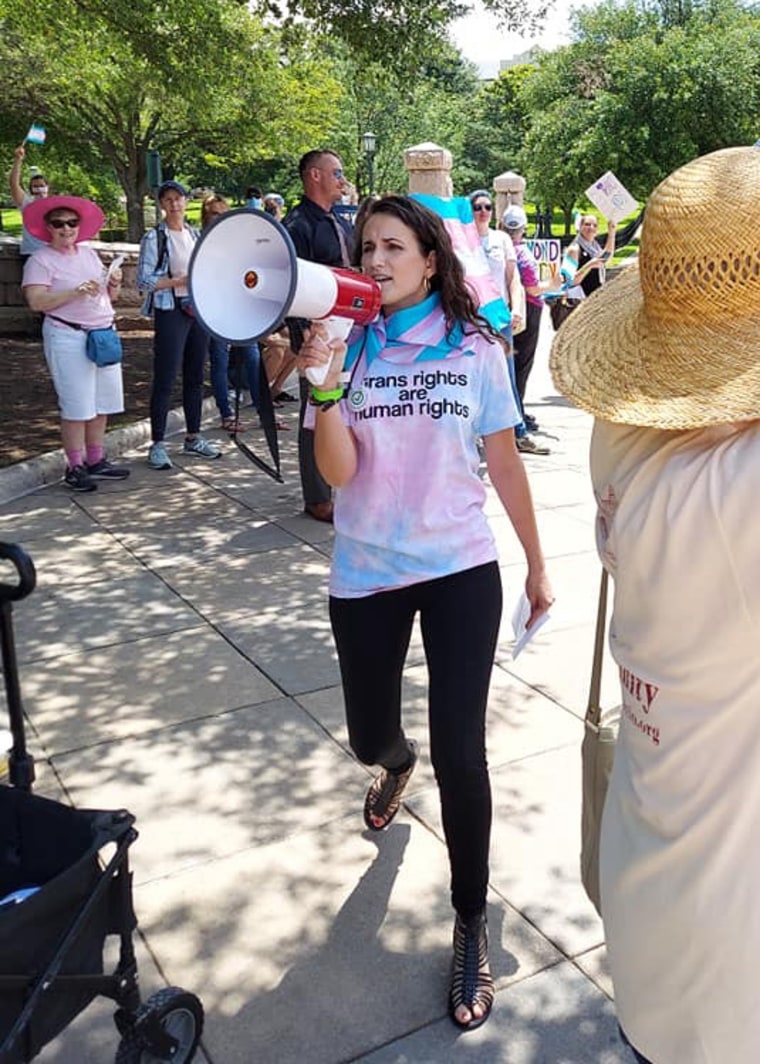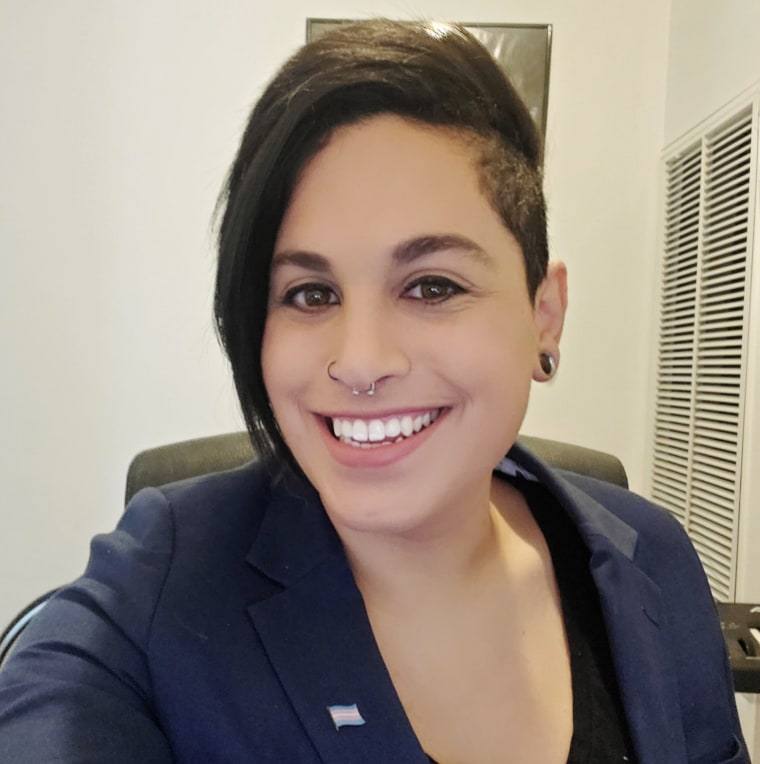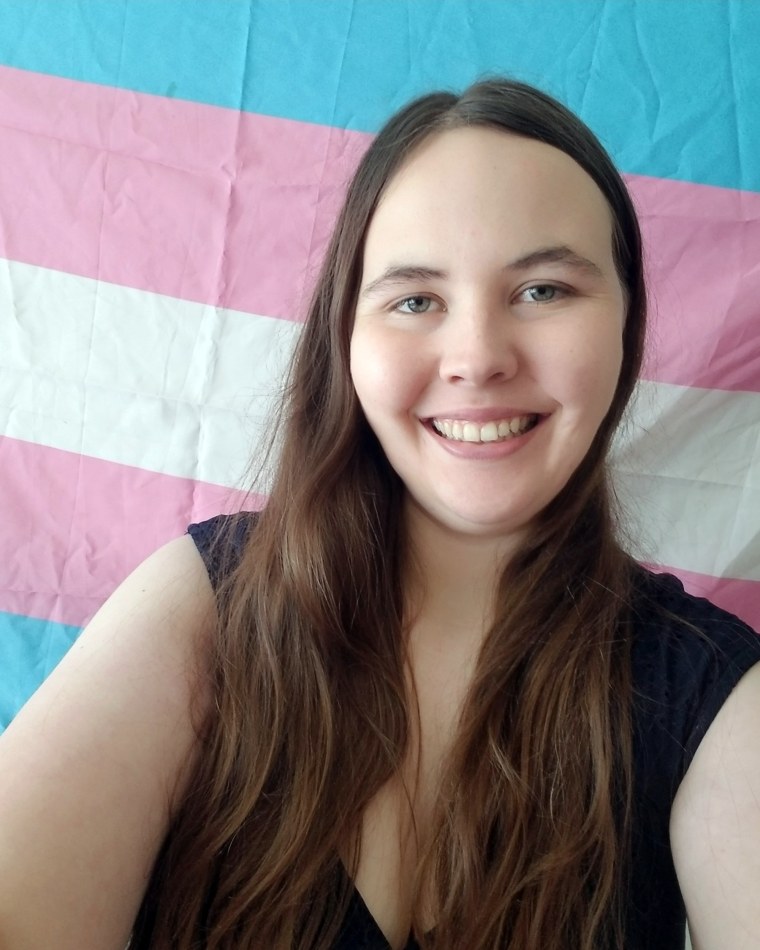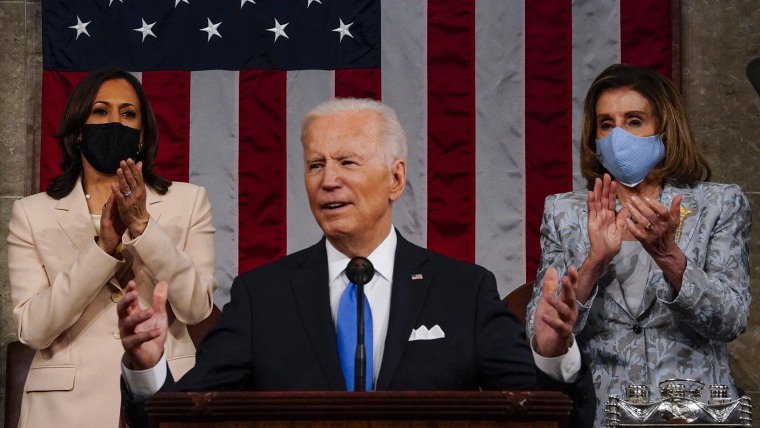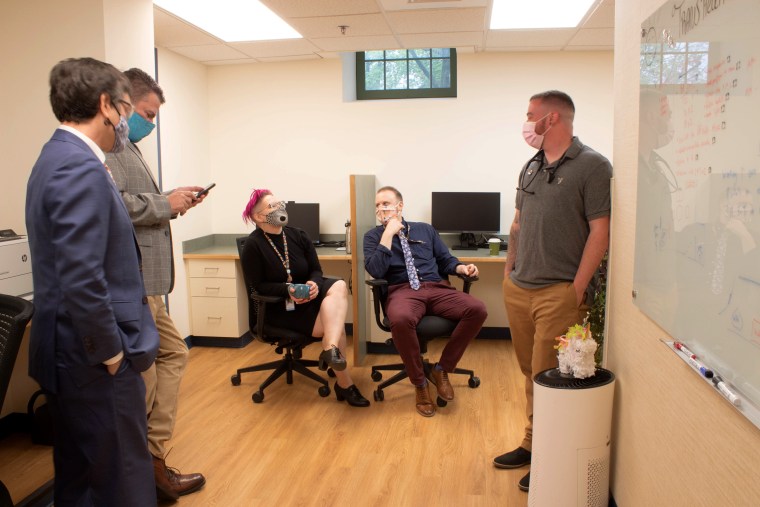Meet the minister fighting anti-transgender bills in Texas
Texas mom Annaliese Cothron drove an hour and a half from her home in San Antonio to the state Capitol in Austin this year for a rally in support of transgender children, including her own child. It’s a drive she has made so many times that she has lost count.
Trans youths in the state have been the targets this year of more than 50 bills that would restrict their participation in sports or ban them from gaining access to certain health care, among other restrictions.
Cothron was leading the crowd in a chant, but she started to get tired. So she asked the Rev. Remington Johnson, a Presbyterian clergywoman and a fellow activist, to take the bullhorn.
Johnson, a trans woman who has testified almost a half-dozen times against anti-trans bills, had shown up that day riding a longboard, wearing hot pink shorts and carrying a huge trans flag, Cothron recalled. She took the bullhorn, and the first thing she said was: “Trans kids are magical.”
Cothron, who has an 8-year-old child who is nonbinary, said the moment has stuck with her.
“That, to me, was so powerful,” she said. “Nobody talks about my child like that, because they don’t have the same experience that a trans person has to know really how truly unique and magical and powerful transgender children are.”
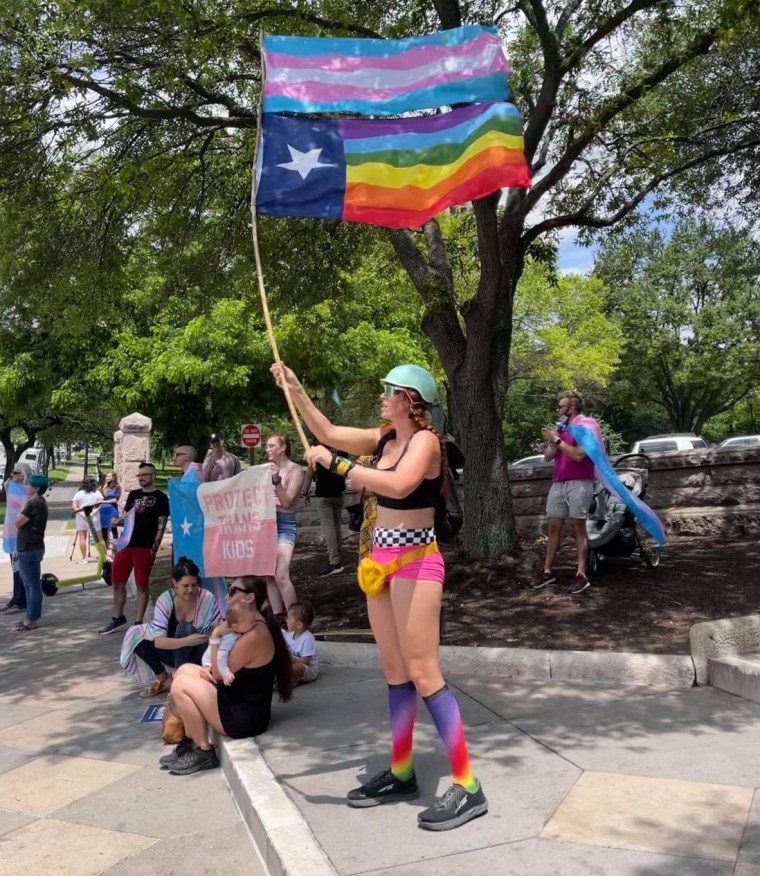
Johnson, a health care chaplain who previously worked in a hospital supporting people who are sick or dying, said her role in life is to be a caregiver and a “justice bringer.” She returns to the Capitol again and again despite the toll it has taken on her physically and emotionally, not only to advocate for herself as a trans woman, but also to bring some levity to a space that has been traumatizing for trans people and families.
“The caregiving at the bedside, the caregiving at the Capitol — it’s all one and the same,” said Johnson, who is working on her master’s degree in nursing at the University of Texas at Austin. “These are all systems, and there’s suffering swirling, and I feel like my role and my responsibility here is to at least show up.”
Activism as an ‘exercise in self-love’
Johnson, 35, grew up just outside Texas in the rural Oklahoma Panhandle, in a family with Mennonite roots. She said she wasn’t raised with liberal or conservative ideals; she was “kind of raised tabula rasa” — her parents would encourage her to put herself in other people’s shoes.
Johnson said that in junior high school, she had an experience with her family that made her feel as though she couldn’t talk about her identity openly. One evening, while her family was visiting the gay-friendly beach town of Provincetown, Massachusetts, two tall women walked past, she said.
“I remember as a kid just being like, ‘I don’t know what that is, but I love everything about it,’” Johnson said. “I don’t know if they were drag queens or trans women or what, but it was magical. But that was also the same moment where I got to hear from family members about how they were not OK with those folks. So it was this sort of whiplash.”
She said her coming out process was gradual after that. She told a therapist in college how she was feeling about her gender, and the therapist suggested that she might be a trans woman, “and I was like, ‘Thank you very much,’ and I never went back,” Johnson said.
She wrestled with internalized transphobia — a battle that continues to this day and plays a role in her activism, she said.
She moved to Texas in 2008. Nine years later, Texas Republicans introduced a bill that would have required trans people to use the bathrooms that matched the sexes listed on their birth certificates. Although Johnson was out as trans at that point, she said, she didn’t feel ready to participate in activism, because she felt she “was the problem.”
“I just felt like I was the boogeyman that Republicans were talking about, because I was this huge, built, powerful figure that was going to be using the restroom with them,” she said. She didn’t feel ready to advocate then, but when the 2020 legislative session began, she decided she wanted to be there.
“I want to show up for me and because a lot of the things that these legislators and anti-trans folks were saying are things that my loved ones have said to me during my transition and internalized transphobia that I say to myself,” she said. “So some of this is an exercise in self-love and self-compassion and a tangible reminder that there’s nothing wrong with me.”
‘Fixing things is what I do’
Among the families who are fighting anti-trans bills at the Capitol, Johnson’s presence is known as healing. She developed that skill, putting people at ease, during her work as a health care chaplain, when she would help people make difficult decisions, such as whether to go through with high-risk operations or to go home with hospice, or end-of-life, care.
She said she introduced herself to a woman in hospice care as “a fixer.” The woman responded “What are you going to fix?” and Johnson said, “I’m going to fix it.”
“And I did, I fixed it,” Johnson said. “I couldn’t cure her cancer, but I could help her build a relationship with her care team. I can help her build a relationship with her family.
“Fixing things is what I do,” she added.
Even outside of her activism, in her personal life, she fixes. She took up woodworking and built the cabinets and the countertops and redid the flooring and the windows in her last home. During the pandemic, she taught herself how to longboard, and she now builds her boards herself.
Her friend Meghan Jacobson said fixing things and caring for people are at the core of who Johnson is.
“She worked in hospice because she recognizes the specialness and the importance of these moments that a lot of other people run away from,” Jacobson said, adding that Johnson saved her life over the last year by connecting her with a mental health care provider and by simply being there to support her.
Parents who advocate on behalf of their transgender children at Texas’ Capitol tell similar stories.
Linzy Foster, who is from Austin, has been to the Capitol about a dozen times this year to advocate on behalf of her 7-year-old trans daughter. She said that she has been dealing with a lot of anxiety recently and that during a news conference last month, she was breathing heavily. Johnson, who was sitting next to her, noticed.
“She just put her hand on my back and was rubbing my back, and we just had this little moment,” Foster said. A reporter from the Austin American-Statesman captured a photo; Foster said that when she saw it, she “burst into tears.”
“Because it’s just symbolic — she is fighting her own battle, but she keeps showing up for the parents so that we can show up for our kids,” Foster said.
The energy at the Capitol is often heavy and traumatic for parents, Foster said, and Johnson makes everyone laugh.
For example, at one news conference, Johnson described how Republican legislators in Texas and elsewhere tried to pass bathroom bills after the Supreme Court ruled in favor of marriage equality in 2015. “What happens is they try to vilify women like myself who have a little bit of size, and we’re just too charming and beautiful to want to pee next to,” she said, leading to a chorus of laughs.
Johnson said she tries to bring humor and joy to her activism because she wants trans people watching “to feel safe, at least for a tiny moment.”
“I want them to see somebody that gets to stand up in front of them, and I want to feel like I’m a good representative,” she said. “I want to feel like the mothers can look and say, ‘Oh my gosh, my child can grow up and it’s going to be OK.’ I want to offer a tiny moment of levity and power and hope.”
‘This is not trans tragedy. This is trans joy.’
Although someone wouldn’t know it by watching her speak at the Capitol, Johnson said that she has been traumatized by her activism this year and that the trauma is getting worse as she continues to go back.
She compared the experience to a sports injury. Sports have been and still are a huge part of her life — which is partly why she fights so hard for trans kids to have the right to play. She plays on a gay flag football team in Austin.
“Showing up to the Capitol is like playing through an injury,” she said. “There has been a traumatic injury to my soul. And I see it, and I’ve had it checked out by professionals, and they say, ‘You can keep playing on it, but it’s going to hurt you.’”

But she stressed that activism isn’t only about trauma. She said that after the Supreme Court ruled last year that LGBTQ people are protected from employment discrimination under federal law, she rode 26 miles around Austin on her homemade longboard carrying a huge trans pride flag. “People were honking and stopping for photos,” she said. “It was really special.”
For Cothron, Johnson’s positivity and joy show her that her nonbinary child can grow to thrive.
“This is not trans tragedy. This is trans joy,” Cothron said. “And Remington is there to really embody that. … To me, my child being able to have role models who are adults and fighting — and not just fighting but also thriving — that is just so critically important.”
For Johnson, that’s the trans experience: “to be able to go through discomfort and come out on the other side with this buoyant, joyous presence,” she said. “That’s who we are. That’s who I am.”
